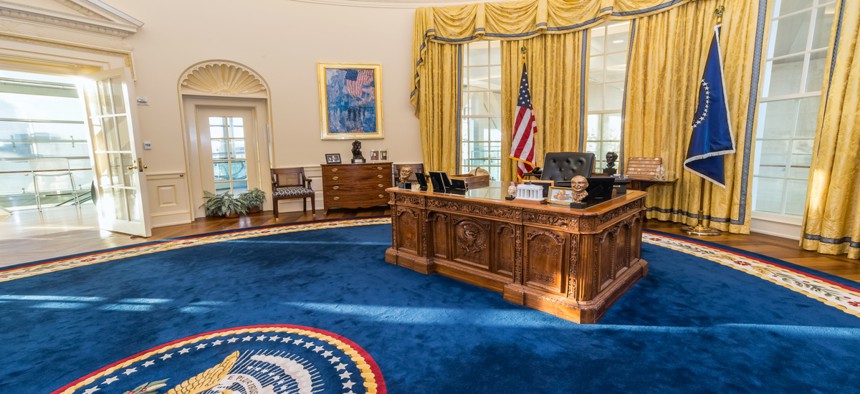Rolling Back Trump Workforce Policies Won’t Be As Simple As Rescinding Executive Orders

amadeustx/Shutterstock.com
President-elect Biden has vowed to rescind on his first day a series of Trump-era directives aimed at weakening federal labor unions and politicizing the civil service, but repairing the damage could take much longer.
President-elect Biden made trust in the federal civil service a centerpiece of his campaign, but experts and union leaders said reversing President Trump’s workforce policy will require a “holistic” approach that could take months.
During the campaign, Biden vowed to rescind on his first day in office a series of executive orders aimed at reducing the influence of federal employee unions and making it easier to fire federal workers. And he is widely expected to rescind an executive order signed last month that would convert potentially tens of thousands of federal employees out of the competitive service and into a new Schedule F, making them effectively at-will employees.
But experts on federal workforce issues said Monday that rescinding those orders will only mark the start of the work required to restore federal labor relations to a pre-Trump status quo.
“By the time it comes for Biden to go to the inaugural balls, I think he’ll have writers cramp from signing so many executive orders to undo what Trump has done across the board,” said Donald Kettl, the Sid Richardson professor at the University of Texas Austin’s Lyndon B. Johnson School of Public Affairs. “[The] first item of business on that front will be to wipe out Schedule F, but that will be a whole lot more complicated than signing a piece of paper abolishing it. One thing that’s important to remember is that it really lays out not only substantive changes, but it gives the operating agencies discretion on how to do it, so it winds up being scores of actions throughout the government.”
Andres Grajales, deputy general counsel for the American Federation of Government Employees, said unions are also recommending that Biden rescind an executive order that removed administrative law judges from the competitive service.
“All of these can be revoked, including the Schedule F order, but whether the revocation alone would undo the damage those orders have done is a very different question,” he said. “That’s something where the incoming administration has its work cut out for it.”
In the two years since Trump signed executive orders reducing the scope of collective bargaining at the federal level, new union contracts have been implemented at dozens of agencies. Rescinding the orders would not restore union members’ rights on its own.
“One of those things they’ll need to do would be coming to the table and renegotiating many of the collective bargaining agreements that were entered into under those orders,” Grajales said. “And certainly, the president could direct the heads of agencies to move to renegotiate those contracts, and that could be done by executive order . . . I think what they need is a holistic approach to preserving a merit-based and professional civil service, and part of that is going to be engaging with unions and undoing this damage.”
Grajales also cited the need for the Biden administration to reverse a series of federal personnel regulations promulgated by the Office of Personnel Management, including those aimed at implementing orders easing the firing of federal employees and restricting what actions are subject to grievances under the Back Pay Act.
“Typically, when an agency engages in notice-and-comment rulemaking, then in order to change a final rule, the agency would have to engage in another round of notice-and-comment rulemaking,” he said. “That’s not always the case, but it’s typically the case. So in these cases, it could require exactly that, another round of rulemaking, which they could certainly do.”
Additionally, the Federal Labor Relations Authority has been increasingly active in the Trump administration’s to narrow unions’ collective bargaining rights, upending decades of precedent in both concrete bargaining disputes and through controversial “general statements of policy.” Kettl said it could take months, if not longer, to repair the damage done in that arena.
“The thing about boards like the FLRA and the courts is that they operate on a case-by-case basis, rather than issuing regulations with broad and sweeping sets of standards, so it will take time for enough cases to work their way through to affect the balance in the system,” he said. “If appellate bodies, and these case-by-case agencies in particular, could choose cases that push back aggressively [against the current FLRA], they could choose to do these cases first, and a lot of them, and quickly. It may not take years to change the underlying policy, but it’s not nearly as simple as changing existing policy via executive order.”
NEXT STORY: FCW Insider: Nov. 10



